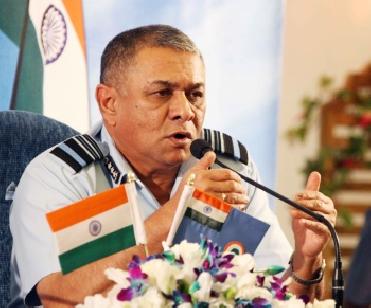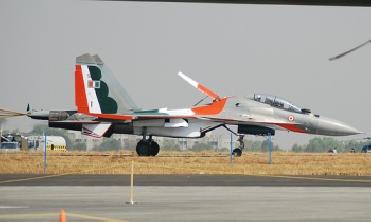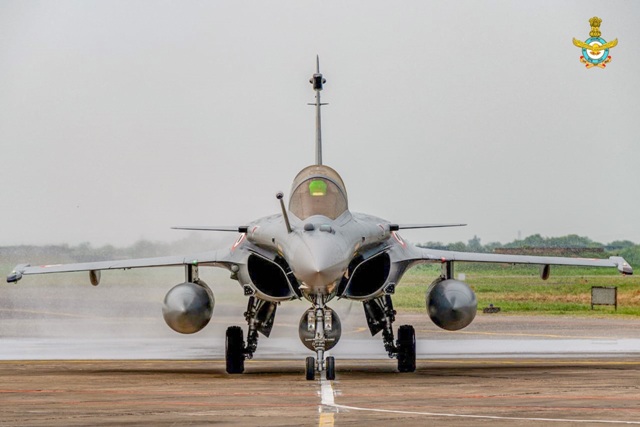60th National Day Parade, celebrating the founding of the People's Republic of China, at Tian'anmen Square.
China’s rapid rise as a regional, political and economic power with global aspirations is an important element of today’s strategic environment – one that has significant implications for the region and the world.
The pace and scope of China’s military transformation has increased in recent years, fueled by continued high rates of investment in its domestic defence, science & technology industries, acquisition of advanced foreign weapons, and far reaching reforms of the armed forces. The expanding military capabilities of China's armed forces are a major factor in changing Asian military balances.
China's biggest military parade on October 1st, 2009 showed that it is modernising its forces and transforming its army with formidable new capabilities. The 60th National Day parade was China's biggest military parade in the decade. The parade display showcased a wide array of missiles, artillery systems and other weapons used by the army, navy and air force wings of China's People's Liberation Army (PLA).
The military display is held on National Day once every 10 years and involves about 5,000 people as well as tanks, missile-carrying vehicles and aircrafts.
National Day parade and China's military competence
China maintains one of the largest militaries in the world, based on its inventory of major weapon systems. In the past also China's growing military capability has attracted a great deal of attention. China's PLA is the unified military organisation of all land, sea, and air forces. The PLA is the world's largest military force encompassing PLA Ground Force (PLAGF), PLA Navy (PLAN) and PLA Air Force (PLAAF) with more than 8000 tanks, 1,900 aircrafts and 760 naval vessels.
The most startling weapons paraded on China's National Day were five types of missiles of the Second Artillery Force (SAF) including China's most sophisticated nuclear-capable intercontinental missiles. SAF is the strategic missile forces of the PLA that controls China's nuclear and conventional strategic missiles.
Among them rolled the upgraded intercontinental DF-31 nuclear capable missiles on long-bed trucks along with advanced short-range DF-11 and DF-15 missiles. Sea-skimming YJ-83 anti-ship missiles, DH-10 long-range cruise missiles, HQ-9 and HQ-12 surface-to-air missiles (SAM) and J-10 fighters took part in the parade.
The newest generation of DF-31 (Dong Feng-31) is a long-range, three stage, solid propellant intercontinental ballistic missile in the Dong Feng missile series. China has developed an improved variant of the DF-31 called the DF-31A. This upgraded missile has a reported range of 11,200+ km, and possibly MIRV (Multiple independently targetable reentry vehicle) capability to hold 3 warheads each capable of a 20-150 kT yield. The DF-11, also known as the M-11 (export), is a road-mobile short-range ballistic missile (SRBM) having a range of 300 km and 500 kg payload. The DF-15, also known as the M-9 (export) is a single-stage, solid-fuel SRBM with 600 km range and 500 kg payload.
DongHai 10 (DH-10) is a second-generation land-attack cruise missile (LACM). The DH-10 is a three-missile tube variant of the Russian Raduga Kh-55 cruise missile. The HongQi 9 (HQ-9) is a long-range, all-altitude, all-weather SAM system. The HongQi 12 (HQ-12) is a medium- to long-range, all-altitude SAM. The Yingji-83 or YJ-83 is an anti-ship missile, designed as a supersonic successor to the subsonic YJ-82 missile.
The Chengdu J-10 is a multirole fighter aircraft designed and produced by the PRC's Chengdu Aircraft Industry Corporation (CAC) for the People's Liberation Army Air Force.
 Previous Article
Previous Article Next Article
Next Article













The Indian Air Force, in its flight trials evaluation report submitted before the Defence Ministry l..
view articleAn insight into the Medium Multi-Role Combat Aircraft competition...
view articleSky enthusiasts can now spot the International Space Station (ISS) commanded by Indian-American astr..
view article